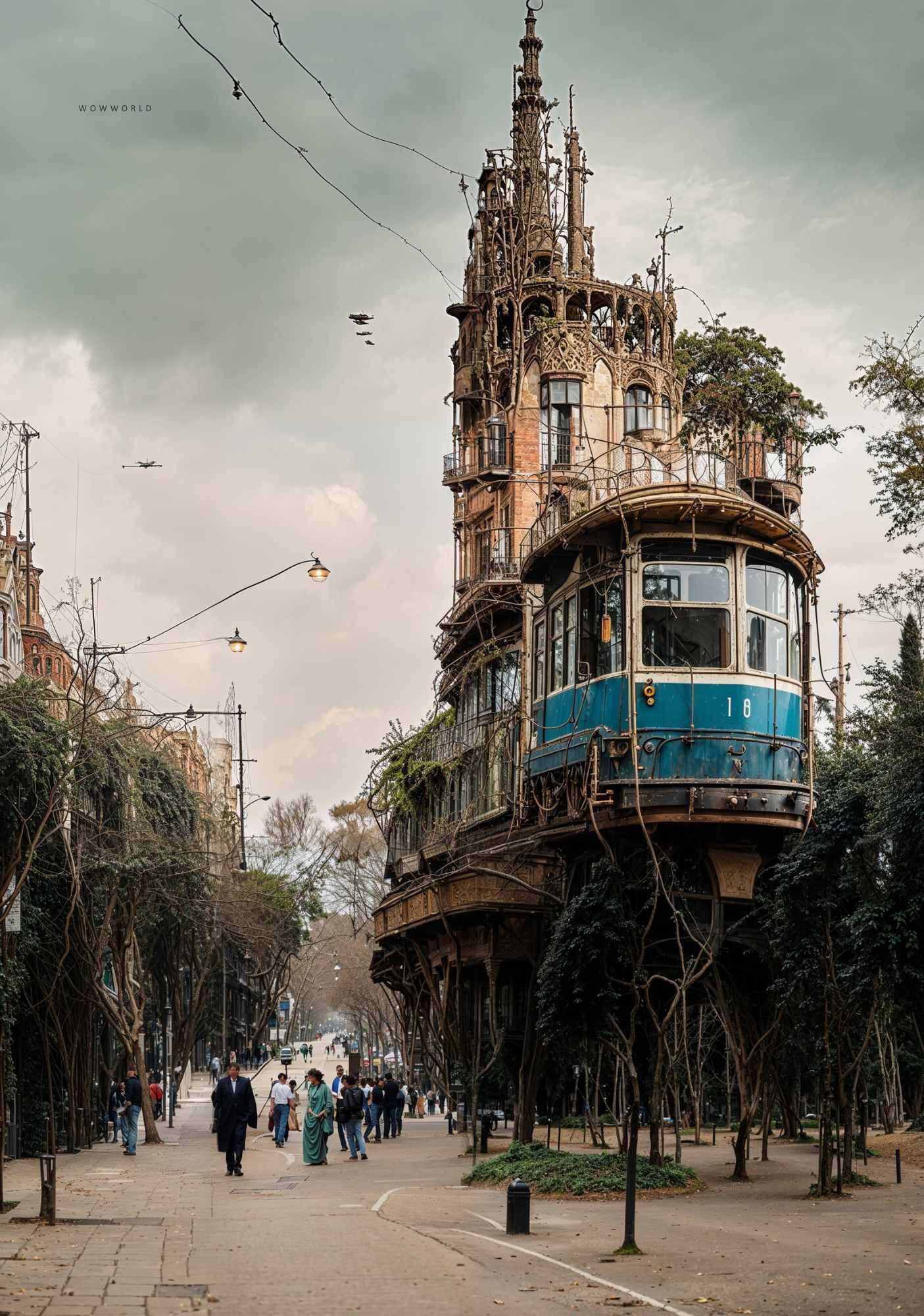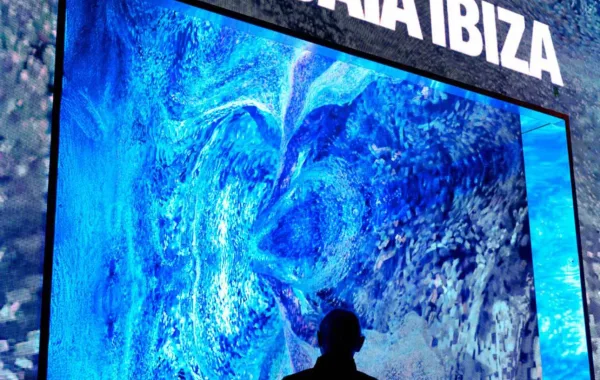The City is a Tram: Navigating Memory through AI and Poetry
In a digital landscape suspended between recollection and invention, Hassan Ragab (@hsnrgb), based in Irvine, California, crafts visual meditations that transcend simple imagery. Whether reimagining Alexandria’s tram cars floating through skies or buildings collapsing gently into memory, Ragab’s creations blend heritage with surrealism, nostalgia with resistance, silence with movement.
His defining works—“The City is a Tram,” “Legacy in Motion,” and “Where the City Boards Itself”—echo with emotional authenticity amid digital imperfection. While AI often emphasizes precision, Hassan deliberately embraces glitch and distortion, creating sensory archives alive with history and poetic defiance.
“The sea doesn’t stop the tram, just as time never stops Alexandria. It moves forward through waves and memory, where rails kiss water and the past keeps riding.”

Interview with Hassan Ragab
1. What first inspired The City is a Tram?
It didn’t start as an exhibition or project, it began as a personal act of remembering. I was far from Alexandria, the city I grew up in, and I needed to see it again, not in photos, but in visions. I started creating with AI to revisit the fragments I held inside me: the balconies, the old tram cars, the thick night air.
2. Why did you choose the tram as a central motif?
The tram became more than just a recurring visual, it became a metaphor. A metaphor for time, resilience, and a city that resists being reduced to just its past or future. Alexandria moves sideways through history, like a tram on stubborn rails, carrying with it layers of identity, rupture, and resistance.
3. What role does AI play in your artistic process?
AI isn’t just a tool, it’s a form of collaboration and critique. I used MidJourney, allowing it to misremember Alexandria with me. I didn’t correct the errors. The glitches and hallucinations revealed something honest: how our cities are filtered and misrepresented through biased datasets. That distortion became part of the poetry.
4. How did audiences respond to this reimagined Alexandria?
Unexpectedly, the work resonated. People saw themselves in warped echoes. Some saw the city they’d forgotten, others a version they never knew but always felt. It wasn’t accuracy, it was memory

5. What were some defining moments in the evolution of this series?
By October 2024, the project became the basis of my first solo exhibition at Shelter Art Space in Alexandria. From there, it grew: pieces were exhibited internationally, printed large-scale, animated, and even adapted into wearable formats. But the core remained the same, this series belongs to a conversation, not a gallery wall.
6. What themes does the series confront beyond Alexandria?
This project isn’t only about one city, it’s about the global South and the stories often ignored by generative models. It challenges which histories are prioritized and whose visual vocabularies dominate. The work is a quiet rebellion against erasure and oversimplification.
7. Why incorporate motion into the series later on?
Still images couldn’t fully capture the emotional flux I was trying to express. Through AnimateDiff and ComfyUI, I brought scenes to life, like a tram melting into waves or buildings blooming like flowers. These animations turned space into emotion, into moments of longing and disorientation.
8. What message do you hope viewers take away from The City is a Tram?
The work doesn’t give answers, it opens a portal. It invites reflection on memory, identity, and place, letting those questions ride quietly through the city.
Hassan Ragab Crafting Digital Memories from History and Heritage
Hassan’s interdisciplinary approach is rooted deeply in architecture, research, and visual arts. Moving fluidly between analog emotion and digital creation, he challenges conventional aesthetics and the colonial biases embedded within generative AI tools. His work does not seek photographic accuracy; rather, it cultivates emotional resonance and critical dialogue.
What began as personal remembrance evolved into his 2024 solo exhibition at Shelter Art Space in Alexandria, later shown internationally as animations, large-scale prints, and interactive installations. Through layered compositions, Hassan reclaims space, asserting that heritage lives in motion, continually reinvented by those who remember.
contact us
02
SUBSCRIBE TO WOW WORLD

Stay ahead with insights, stories, and inspiration from the global creative frontier. WOW WORLD isn’t just a magazine, it’s a movement. Exclusive features, behind-the-scenes access, and updates from visionary artists and designers. Be part of the future of creativity. Join now.
latest posts
01
Read More!

Fragmented Realities






